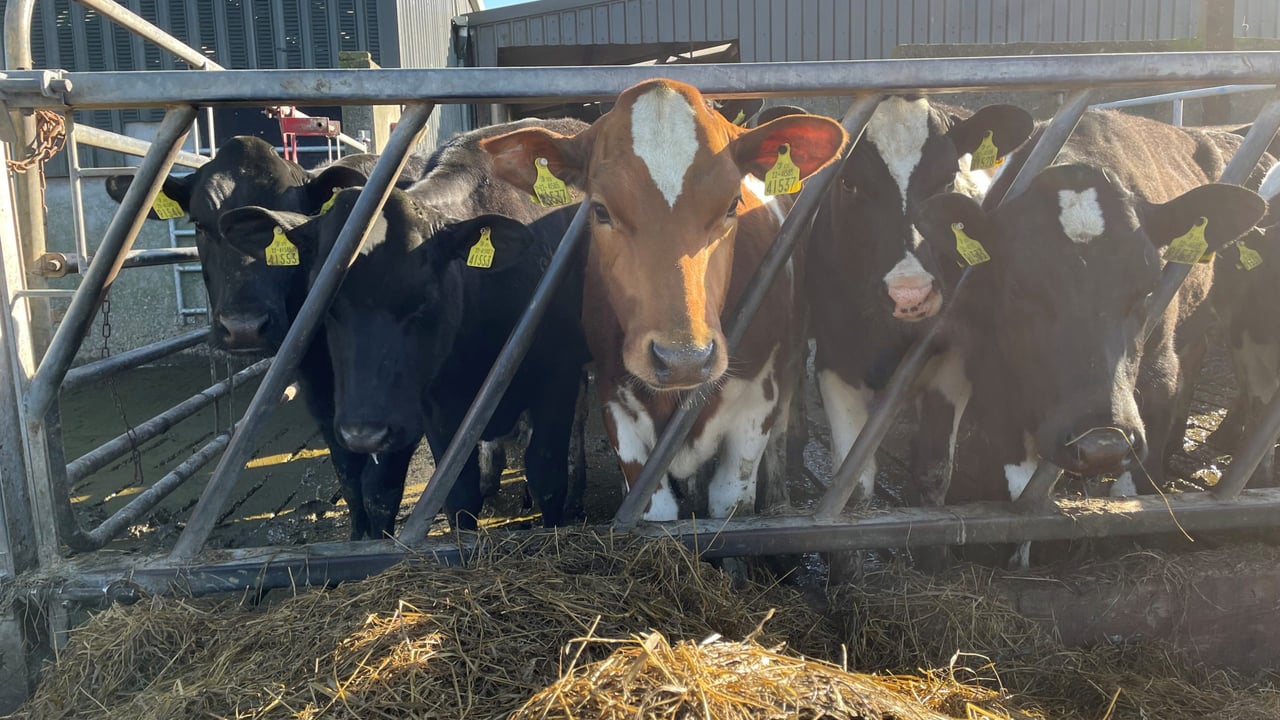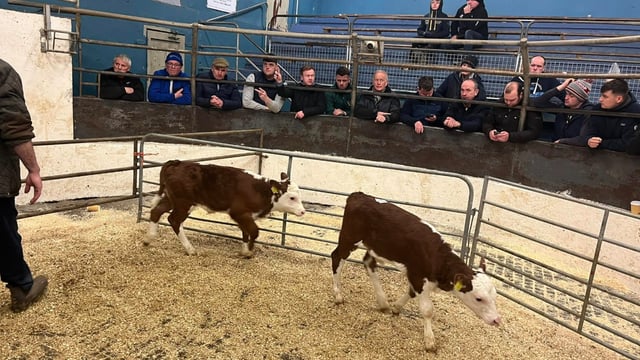Is there a looming shortage of replacement dairy heifers?
The trend over the last few years is that farmers are breeding the number of replacement dairy heifers that is required for a sufficient replacement rate with little to no surplus heifers being bred.
While sexed semen has been a fantastic tool for the industry, it has led to more selective breeding, increasing genetic gain in herds but limiting the amount of heifers being born.
Sexed semen is generally being used in conjunction with dairy-beef bulls, which means farmers are breeding the heifers they need and putting the rest to dairy-beef.
However, should farmers be using more sexed semen in their herds, especially in light of recent trends in replacement rates and the number of dairy females being born on farms this year?
As of April 1, the number of calves registered from the dairy herd was over 16,000 lower than at the same time last year, which was a decline of around 1.4%, according to the Irish Cattle Breeding Federation (ICBF).
However, the most concerning trend is the drop in dairy female calf registrations, which are down significantly, by 38,000 compared to this time last year.
This amounts to a 11.5% drop in 2025, which will have a knock-on effect on replacement heifers available in 2027.
Birth registration statistics from January to April in 2024 compared to 2025 is as follows:
| Jan 1 - April 1 2024 | Jan 1 - April 1 2025 | Difference | % Difference | |
|---|---|---|---|---|
| All dairy calvings | 1,136,313 | 1,120,146 | -16,167 | -1.42% |
| Dairy females | 332,420 | 293,557 | -38,863 | -11.69% |
| First calved heifers | 266,352 | 241,765 | -24,587 | -9.23% |
The number of first calved heifers recorded by April 1 is nearly 25,000 fewer than in 2024, which represents a 9% drop.
This information tells us that not only are heifer calves and first calved heifers going to be in short supply in a couple of years, but the market and demand for dairy heifers is likely going to be strong over the next number of years.
Pregnancy rates with sexed semen are about 10% lower than conventional, therefore a minimal impact on the herd's fertility and having heifer calves born together in the first few weeks of calving simplifies rearing and reduces costs.
Speaking with AI companies across the country, there was a fear that conventional AI would become more popular this year with the strong dairy bull calf trade this spring.
While conventional AI has proved popular and still has its place for many herds, sexed semen was still a lot more popular.
Farmers should not let these prices influence their breeding decisions and should be cautious on focusing on these short-term gains, as the long-term benefits of producing enough dairy calves early in the calving season far outweighs the value of male calves.
The ICBF are strongly encouraging farmers to consider the use of sexed semen and urge farmers to follow these key recommendations to maximise results:
- Use a minimum of two high-EBI sexed semen straws for each replacement dairy female required;
- Prioritise insemination during the first three weeks of the breeding season to increase the chances of success;
- Target the most suitable animals, including maiden heifers, younger cows (in their 1st to 4th lactation), and those that calved early (January/February);
- Ensure optimal timing for AI—ideally between 14 to 20 hours after the onset of standing heat.
The reality is that many farmers are not even breeding enough dairy heifer replacements for their own herd, slowing down genetic gain for themselves and being left with an older, less fertile herd.
Farmers should be aiming for at least a 20% replacement rate and should ideally be carrying a 22-23% replacement rate for two years as one or two inevitably underperform or calve down with a blank quarter.
One can only ask the question, the herds around the country with incredible genetic merit and high Economic Breeding Index (EBI) animals, should they be wasting those genetics by using dairy-beef straws when they have such potential to breed high genetic merit, top performing heifers for herds looking to buy in or rapidly improve their herd's genetic gain?
The average EBI in the country has sky-rocketed in recent years and the number of top-performing herds of high genetic merit are plentiful.
Yet those herds are using a substantial amount of dairy-beef with minimal sexed semen, and why would they not?
After all, you cannot blame these farmers, as it is the most economically beneficial way of breeding at the moment as they can ensure that the dairy-beef calves born on the farm are sold at three weeks of age.
With the drop-off in dairy heifers born in the country, in a couple of years, dairy heifers will be in huge demand, so it might be worthwhile breeding a couple of surplus heifers and using a few more sexed semen straws.
However, with the drop-off in the number of dairy heifers born year-on-year, should there be an incentive for the top performing herds to produce a certain amount of surplus heifers?
For herds of low genetic merit and looking to achieve genetic gain and enhance performance, the quickest way of improving the genetic profile of your herd is to buy in high genetic merit heifers, which may prove to be a challenge in the coming years.
For these herds looking to source heifers for two years time and wanting to improve the herd's genetic profile through a flying herd, it might be an option to discuss some sort of an agreement with a farmer who has your desirable genetics.
An option may be to see if that farmer would put an additional number of cows or heifers to sexed semen, to breed your replacements and for you take those heifer calves as they drop straight away.
However, these types of arrangements can prove complicated and can cause upsets and rows if full contracts with terms and conditions are not drawn up and agreed upon.
If you are thinking of a route similar to this, you should discuss it with your dairy advisor to see what the best course of action is.
However, farmers need to firstly look after their own stock and their own number of replacement dairy heifers as with bovine tuberculosis (TB) rampant across the country, farmer more so than ever, need a comfortable amount of replacements for themselves.





